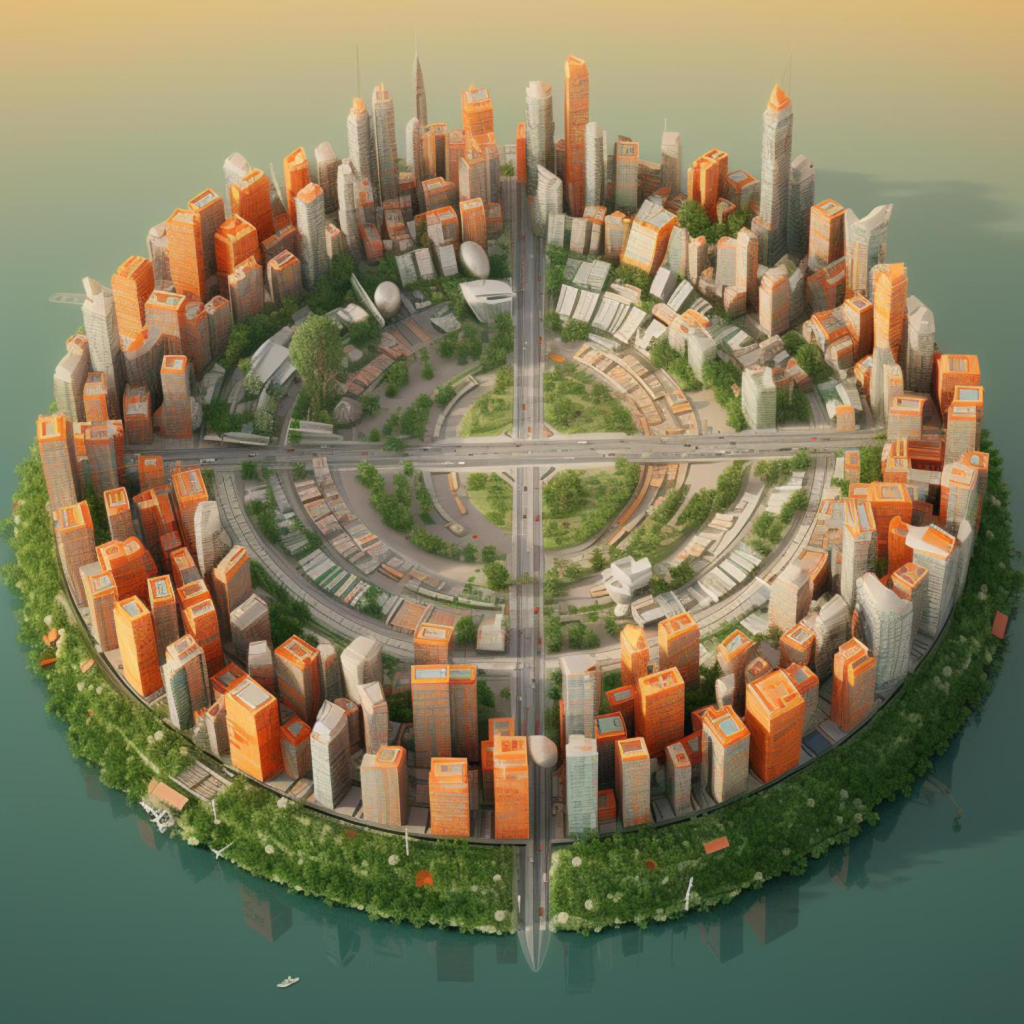As India continues its journey towards urbanization, the development of well-planned cities has become a crucial aspect of sustainable growth. These cities not only offer a higher quality of life to their residents but also play a pivotal role in shaping the economic, social, and cultural landscape of the nation. In this blog, we will explore five of the best well-planned cities in India that stand as shining examples of urban excellence. We will also touch upon the current price trends in India to provide a holistic view of these urban hubs.
1. Chandigarh – The Architectural Marvel
Chandigarh, often referred to as “The City Beautiful,” is a prime example of meticulous urban planning. Designed by renowned architect Le Corbusier, this city boasts well-organized sectors, lush green spaces, and a well-connected transportation network. The city’s distinct layout ensures that residential, commercial, and recreational areas are well-segregated, leading to efficient land use and reduced congestion. The residential sectors are adorned with modern amenities and impeccable infrastructure, making it a highly desirable place to live.
2. Jaipur – The Pink Panache
Known as the “Pink City,” Jaipur blends history and modernity seamlessly. The city’s planned layout is characterized by wide roads, grand architectures, and a harmonious integration of traditional elements with contemporary urban design. The planning of the city is attributed to Maharaja Sawai Jai Singh II, who implemented the principles of Vastu Shastra, an ancient architectural doctrine. This has resulted in a city where every corner reflects both aesthetic beauty and functional efficiency. Jaipur’s planned bazaars, gardens, and public spaces make it a vibrant urban center that preserves its heritage while embracing progress.
3. Bhubaneswar – Where Tradition Meets Technology
Bhubaneswar, the capital of Odisha, is another remarkable example of well-planned urban development. Designed to cater to the needs of a modern society while staying true to its cultural roots, the city boasts wide roads, well-organized residential areas, and a robust public transportation system. Bhubaneswar’s planned expansion includes the establishment of numerous information technology (IT) parks and educational institutions, making it an emerging hub for technology and innovation. The integration of modern amenities with traditional values has earned Bhubaneswar its reputation as a model smart city.
4. Gandhinagar – A Capital of Sustainability
Gandhinagar, the capital city of Gujarat, is celebrated for its sustainable and organized urban planning. As an extension of Ahmedabad, Gandhinagar was conceived to alleviate the burden on its predecessor. The city’s well-laid-out sectors, landscaped parks, and efficient transportation network make it a poster child for sustainable urban living. The use of renewable energy sources, green building designs, and effective waste management practices has positioned Gandhinagar as a pioneering city in terms of environmental consciousness and planned growth.
5. Navi Mumbai – The Modern Metropolis
Navi Mumbai, planned as a satellite city to Mumbai, showcases an impeccable blend of modern infrastructure and urban planning principles. The city’s layout is a testament to efficient zoning, with well-defined residential, commercial, and industrial sectors. The establishment of modern amenities such as educational institutions, hospitals, and recreational centers has contributed to the hike in property prices in Mumbai. Furthermore, this has led to its emergence as a self-sustaining urban hub. Its strategic location, excellent connectivity, and planned development have made it a favorite among homebuyers and investors alike.
Conclusion
The development of well-planned cities in India not only signifies urban excellence but also lays the foundation for a sustainable future. From Chandigarh’s architectural marvel to Navi Mumbai’s modern metropolis, these cities have demonstrated the positive outcomes of thoughtful urban planning. As urbanization continues to shape India’s landscape, the integration of modern amenities with efficient land use will play a crucial role in creating cities that are not only livable but also economically vibrant.
In the context of property prices, the demand for homes in well-planned cities highlights the significance of thoughtful urban development. However, prospective buyers and investors should carefully analyze the prevailing price trends, economic indicators, and policy changes before making any real estate decisions. By considering both the urban planning achievements and the real estate dynamics, individuals can make informed choices that align with their long-term goals in these well-planned urban havens.
